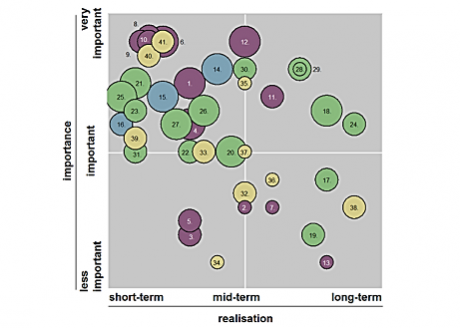
Process opimisation for landline customer
Streamlined telecommunications
Vodafone D2 GmbH is part of the British Vodafone Group, the second largest mobile-network operator worldwide. The company has approximately 34.9 million customers in Germany and employs approximately 13,000 people in its different locations. In 2009, revenue exceeded €9 billion.
Vodafone entered the landline business with its acquisition of Arcor AG.
Initial Situation
The landline branch needed to be integrated and further expanded. For the expan-sion, in addition to direct sales, an indirect distribution channel was created through existing business partners, who were supposed to win over new business customers. There were obstacles to this, however, in the form of lengthy activation processes, low process transparency in complex products and a lack of available information.
The company-wide project “Enterprise Excellence” was launched with the aim of transforming Vodaphone D2 into a more efficient and integrated landline provid-er. An additional sub-project was created to optimise the process for installing business customers’ phone lines, since this affects many central operations, de-partments and systems.
Challenge
One goal of the project is to identify inefficiencies in direct and indirect landline sales to business customers on the organisational, process, and system levels. This will involve understanding sales and processing operations in their full complexity.
Another goal is the development of pragmatic solutions. These have to be compatible with the existing IT systems and organisational structures plus have to tie on already worked out solutions. Finally, new key performance indicators (KPI) and service level agreements (SLA) between the departments shall secure the success in the long term.
Approach
- Take a full company inventory, including an analysis of existing process documentation, key figures and reports
- Conduct professional interviews with specialised personnel from sales, technology, and operations as well as business partners
- Diagnose problems on the basis of the interviews
- Identify problem areas and key focal points
- Analyse the quantity structure: determine the problem areas’ effects in terms of frequency, process delays, revenues, and customer retention
- Develop solutions in cooperation with specialised personnel
- Elaborate primary solutions and set priorities for their implementation
Results
- The professional interviews were received very positively. They displayed that the management was serious about bringing about change, and their willingness to include everyone in the process was highly appreciated.
- Four focal points or problem clusters were identified, although they had many different causes. These four problem areas were: lengthy lead times, insufficient availability of information, unclear orders and ill-defined responsibilities.
- Solutions were found on the organisational, process and systemic levels that all participants supported.
- One central proposal was the setup of a universal information portal (UIP) making all information available to all participants.
-
Implementing the solution…
- allowed customers and business partners to be better informed, increasing loyalty;
- optimised internal processes, saving time and improving order-processing;
- made order processing more transparent and binding, thereby accelerating the process and making it able to quickly handle even complex orders;
- made processing and information handling more professional, increasing customer and employee satisfaction.

